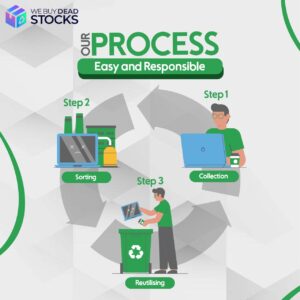Dead stock is inventory you hold that you can’t sell. You could end up with Dead Stock for various reasons including surplus ordering, and manufacturing a little too much, which you find later you can’t sell as you anticipated.
Damaged items, rejected stock, leftover seasonal products, and expired raw materials, all of these are also considered Dead Stock since you can’t sell them. There are certain industries that produce dead stock quicker than others for example food or medicine. A thing to note however is that merchandise that is returned by a customer is not necessarily considered dead stock.
Of course, products don’t just become dead overnight, so at what point do you consider a certain product “dead”? That is a tedious process. To make things simple, however, consider this. Anything that’s unable to sell for a year is considered dead stock (strictly from an accounting standpoint). With that said, let’s take a look at why a dead stock is bad, and why you should get rid of it as soon as possible.
Why is Dead Stock Bad?
Put simply, the dead stock is bad for business because it is expensive. It is expensive to keep in storage, and it’s expensive to keep holding on to. Moreover, it ties up capital, impacts revenue, builds up carrying costs and can take up valuable shelf space in your storage.
- Lost money: The biggest reason dead stock is bad for your business is that it results in lost money. Companies recover their investments by selling stock, if the stock isn’t selling your investment is lost.
- Holding Costs: Known as inventory carrying costs, holding costs increase by the day if you’re keeping stock in your storage that doesn’t sell. Other costs associated are insurance and labor.
- Employee Wages: The more stock that’s on your shelves, the more effort is required to manage inventory. If you keep piling on stock, more employees will need to be hired which results in higher staffing costs.
- Lost Opportunities: The more your dead stocks sit on shelves, the less money there is to reinvest in more profitable items. Not only is dead stock costing money but you’re losing opportunities to spend on profitable stock.
- Less Inventory Space: Deadstock will eventually take up a lot of your shelf and warehouse space which is rather valuable and could otherwise be used for faster-selling products.
Cost of Dead Stock
As an example consider you’re carrying 200 units of stock that retail for $100. If you can’t sell that stock, you’re theoretically losing $20,000 in revenue. And that doesn’t quantify the shelving and staffing costs etc.
On average, a company’s carrying costs can tie up about 30 to 40% of its capital at any given time.





